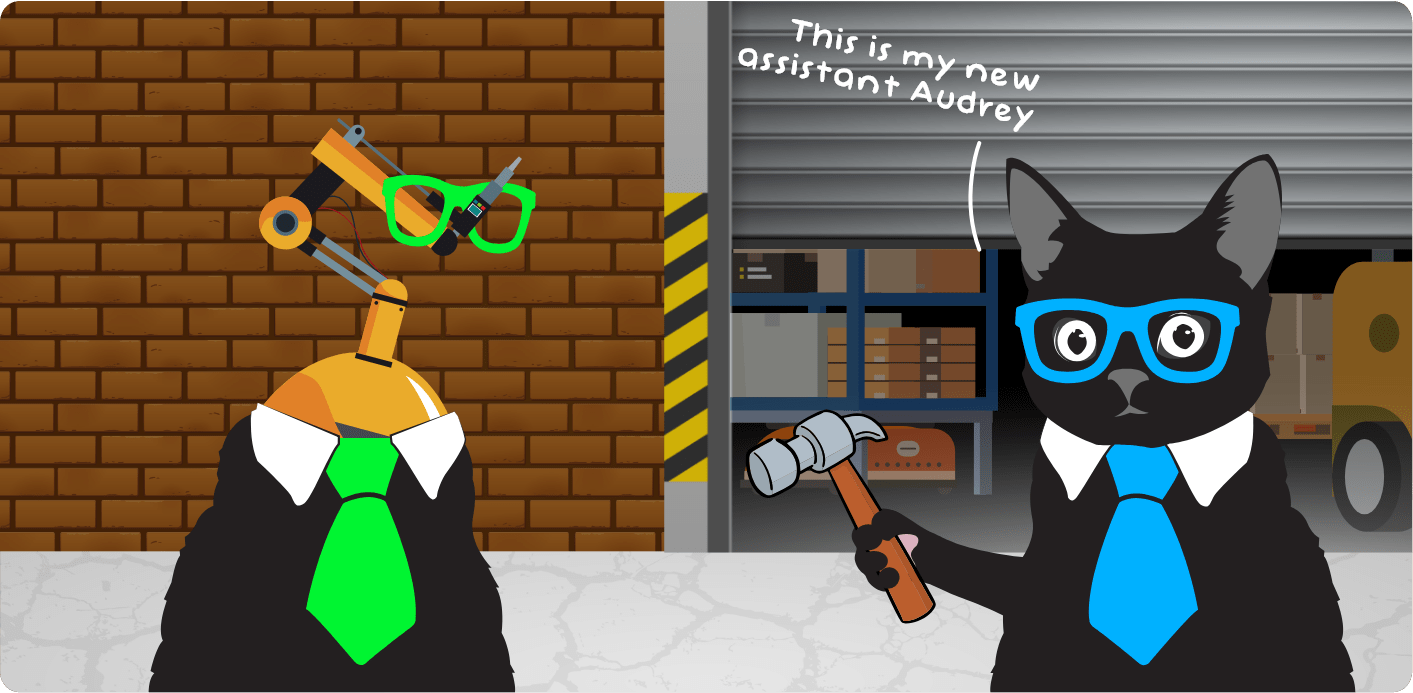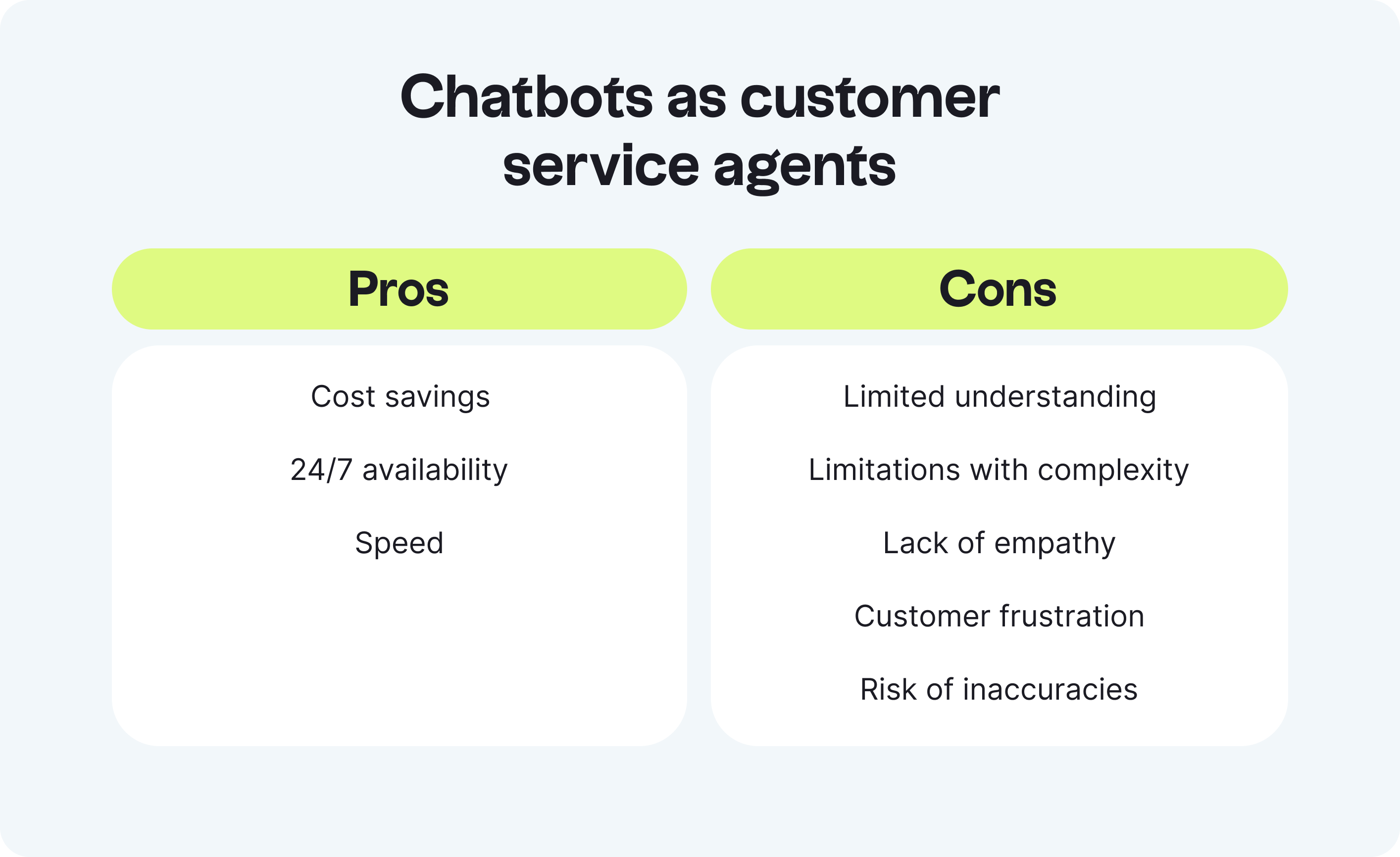Earlier this year, it made headlines when a CEO declared that he was making 90% of his support staff redundant, thanks to a chatbot built in-house.
He was lambasted across the board for his absolute disregard for both quality of service and respect to his employees. Despite this, many of us working in customer service read it with more than an ounce of trepidation.
And by trepidation, I do mean fear.
We got to wondering, what it would look like if AI were to completely take over certain customer service jobs…
- Knowledge manager?
- Customer service agent?
- QA specialist?

Could ChatGPT write your knowledge base?
Many customer service leaders agree that, in the best-case scenario, a customer can solve a problem by themselves.
Our Benchmark Report found that 73% of customer service teams plan to invest more in proactive customer support.
This is made possible by providing a help center or knowledge base or FAQs flush with information about your product, the customer journey, and answers to common issues that crop up for other customers.
ChatGPT is proficient in text generation. Is it logical to outsource the role of knowledge base writer to AI?

The pros of using ChatGPT to write your knowledge base
ChatGPT undoubtedly exhibits prowess in efficiency.
Only a machine can churn out legible content at the rate of 1,000 words a second. When the average person types at 40 words per minute (not even accounting for the planning and ideating that goes into content creation), this is the speed that dreams are made of.
The content may not be original or inspiring, but it can be easily directed.
If you’re skilled enough in the art of prompting, you know to include things like ‘make the tone formative and matter-of-fact’. Come what may, the output will be informative and matter-of-fact.
The biggest pro that eyes will be drawn to, though, is the cost savings. You are saving significantly on employee hours and potential expenses related to training and supervision. No matter what salary your knowledge base creator earns, ChatGPT is – checks notes – free.
But, at what cost to your customers?

The cons of using ChatGPT to write your knowledge base
ChatGPT is unable to contextually understand the greater purpose of the task. Providing customers with accurate & useful information is crucial. If ChatGPT doesn’t grasp the context well, it might end up sharing information that’s wrong, unhelpful, or doesn’t match what the business aims for.
This issue points towards generative AI’s potential to hallucinate. ChatGPT’s hallucination refers to its capacity to generate responses that may be contextually plausible but factually incorrect or fictional. It may produce responses that sound reasonable but are not grounded in reality.
Reality is kind of important when it comes to helping your customers solve real problems.

Your communication should not be ‘machine’
Customers are driven by emotion. Tapping into customer emotion plays a huge part in communication.
Effective customer service means adopting the right tone of voice for your customers.
It’s about understanding how your company wants to portray itself, mirroring the language or your customers, and striking a tone that matches the rest of your communication. Knowledge managers instinctively infuse it into self-service content to create a consistent and authentic customer experience.
-
The weather forecast indicates rain tomorrow.
-
Looks like we’re in for rain tomorrow!
ChatGPT has been trained on mass amounts of data taken from disparate sources from across the internet and from diverse publications. However, there is no denying that ChatGPT’s writing style is generic.
ChatGPT will struggle to capture and reflect the unique brand voice, because it tries to write like everyone. It doesn’t try to write like you.

What’s the verdict?
The clear answer is that you cannot depend on AI alone to write your knowledge base.
Although the cost savings are huge, a faulty knowledge base will cost you far more in the long run. It will only lead to more customers having to contact your support team since self-service capabilities are so lacking.
But that doesn’t mean that your Knowledge Manager, Team Lead, or whoever is in charge of maintaining a help center has to hack it alone. ChatGPT for customer service is a tool, not a replacement – you can find many artificial intelligence tools to aid your writing and help speed up the process.
Could chatbots replace your customer service agents?
This may be one of the most pivotal questions of this customer service era.
Traditionally, chatbots have functioned as AI-driven tools, adept at providing scripted responses to basic inquiries. However, their limitations have been immediately evident. This often causes huge frustration for customers who want more nuanced conversations – not ones in which they have FAQs repeated back to them.
More recently, generative AI has taken the wheel. Generative AI enables chatbots to engage in two-way conversations with a remarkable resemblance to human chatter.
Nearly half of enterprise business leaders believe chatbots are becoming indistinguishable from customer service workers.
There’s a good bot
Now, when we talk about bots, we have to consider that many companies have different definitions of the term ‘chatbot’.
That is, not all bots are made the same.
- A generative bot will be able to converse more fluidly with customers but is prone to error (as discussed above regarding ChatGPT).
- An automated bot relying on conversation design will readily spit out facts but cannot offer any substantive dialogue with your customer.
This doesn’t mean there are good and bad bots, it has more to do with how they are deployed. For example, in which circumstances, whether or not the customer is aware, etc.

The argument for bots
Yet again, the cost-effectiveness of chatbots speaks to their power. Customer service agents require a salary, a desk to sit at, appropriate breaks, etc.
A chatbot can work all hours of the day without complaining. It doesn’t need food, water, or friendly interactions. And it offers answers – or at least responses – fast.
Of course, bots were to completely replace humans without careful planning and consideration, you’re doomed to fail. But, organizations are increasingly taking a measured approach to bot implementation.
Bot best practices
For a quality bot, you need quality data. This means examining past support interactions to detect reoccurring questions, and feeding the chatbot with the right answers.
Businesses usually outsource this — for example, Ultimate helps companies install, train, and automate chatbots with careful consideration for their uses. There are also no-code chatbot builders like SendPulse or ManyChat that let SMBs create chatbots and integrate them with ChatGPT.
The argument against contact centers of full-fledged bots
Wait, you might argue, chatbots are smarter now. They have better understanding, more complexity, can show empathy, are more accurate.
But they are not perfect.
You see above the pros and cons of chatbots in black and white. However, your customers’ judgmental capabilities are multifaceted. They will often still be able to discern a real human from a machine and that will oftentimes lead to annoyance when they cannot reach a human service agent.
In our Future of Support Conversations, we use the example of self-driving cars to illustrate this point. These cars cannot drive drunk, they cannot text-and-drive, they have far better logical capacities in times of stress than many human drivers. Yet these crashes will always make the headlines. This is because people trust machines less than each other.
So what’s the verdict?
Customer satisfaction ranks too high on any company’s priority list to consider this option.
60% of customers are still frequently disappointed by their chatbot experiences.
Customer experience is about more than speed and availability. If you want your customers to be in any way happy with the customer service your company provides, you need human contact center agents.
This doesn’t mean abandoning bots as useless. Using them where appropriate means unlocking human potential, giving your agents more time for higher value tasks, more personalized service, and complex issues – and excellent customer service.
We cannot replace humanity and people doing customer service jobs with just chatbots and robots, they have to supplement each other.
When it comes to customer experience, if you’re cheapening the investment that you are making in your support infrastructure, you’re cheapening the end result as well.
You want to create this great, efficient customer experience with a robot that can answer you in 2.5 seconds. But if take out the humanity of that, you lose the people who are behind the checks and balances of everything. All you’re doing is just going back to those days when we would be punching zero furiously on a phone tree, trying to get to a person that doesn’t exist.
How can AI make customer service agents better humans?
The great bot debate proves that personal, human customer support is now more important than ever. When facing specific issues, most customers prefer speaking to a customer service agent rather than a machine.
This does mean that the most complex, hardest-to-solve problems will land in your agents’ laps. That doesn’t make their job easier.
But while the noise about chatbots rings loudest, there are myriad other ways that generative AI can help make agents better at their jobs. And, subsequently, better at providing excellent service to customers in need.
No team should apply AI to every aspect of customer service: the winning companies are the ones that will augment their teams, not replace.
For example, AI can:
- Automatically translate messages into different languages,
- Summarize conversations into bullet points to make escalation faster and smoother,
- Turn bullet points into eloquent messages for when you want to explain things carefully to a customer,
- Agent Assist tools that can suggest relevant knowledge base articles or suggest solutions.
The way I view AI is as the ultimate assistant for agents.
For example, we know that 81% of customers are happy for companies to use their data to offer better, personalized recommendations. AI can look at a customer’s entire purchase history and proactively recommend suggestions to the agent to give to the customer. This doesn’t only help the agent, it helps the customer and the bottom line.
✨ Watch our webinar to dive deeper into what AI can offer customer service teams:
Could QA specialists be fully replaced by automated quality management?
Contact center quality assurance has undergone several transformations. Although some contact centers still rely on spreadsheets, most have upgraded to using tools like Zendesk QA (formerly Klaus) to manage their support quality.
Customer service QA specialists live in these tools: reviewing customer interactions, tracking KPIs, understanding trends, and spotting weak areas.
Now a new era has ushered in: automated quality management (or AQM).
AutoQA can automatically score every single one of your customer interactions.

Why should you automate your QA?
Automation is the only way to achieve 100% coverage and ensure systematic, continual improvement by seeing the bigger picture.
Large language models can handle massive amounts of data, and tools can break down all of your support interactions to:
- Auto-score for the most popular categories,
- Analyze which conversations are most vital for manual review,
- Help plan data-driven coaching sessions,
- Incorporate valuable customer feedback.

But wait, there’s still a need for a QA specialist
A strong quality management process demands close analysis.
This is done best by a person with data literacy, who can understand trends and patterns using the data provided by automated reviews and who can drill down closer on the most important conversations.
It is for this reason that our Spotlight feature uses artificial intelligence to understand exactly which interactions are the most crucial for a specialist to review. Through this, they can best:
- Identify areas of improvement.
- Provide targeted training to enhance agent performance,
- Understand how best to employ chatbots,
- Offer feedback to other departments about products and processes.
A summary from our esteemed data lead
Having analytical skills is crucial and it becomes more crucial in this era of overwhelming automation being everywhere. Positioning yourself in a way that you can articulate your needs from the data perspective is always good in my book.
AI will come for the human jobs, but it will come for the jobs that humans don’t wanna do, or shouldn’t be doing. It comes for the tedious and the mundane human tasks.
TLDR
The resounding consensus from the podcast season was that AI is going to change how people work, but there will always be a need for a ‘human in the loop’. And that, in general, is the consensus for this article.
You’ve maybe heard the term ‘work smarter, not harder’. Getting to grips with the AI tools is one way for your team to tap into that aphorism and improve.

![Download The Future of Conversations [ebook]](https://storage.googleapis.com/static_site_bucket/1000b88a-klaus-gdb00_1b-1413x630-1.png)




